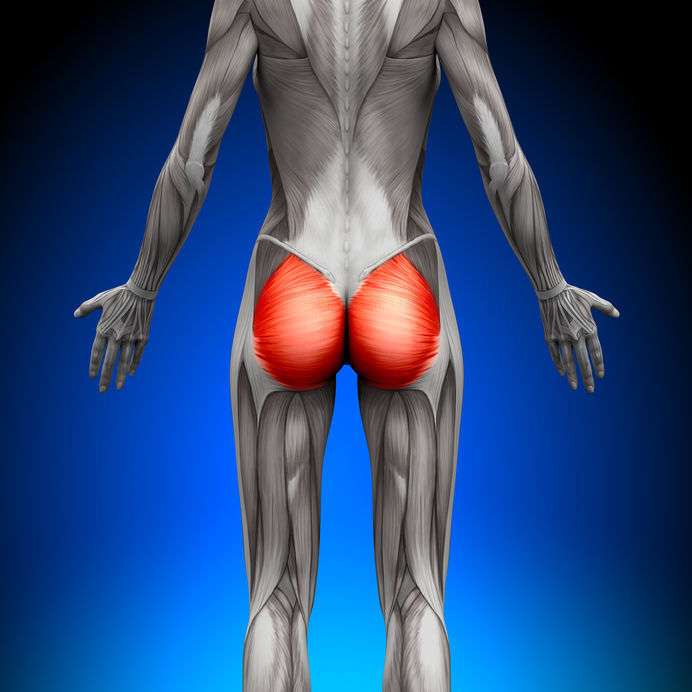
The most common lazy muscles in your body are the glutes. Those are the muscles you may be sitting on right now. They tend to turn off because most of us use the glutes as cushions, rather than as muscles.
These important and powerful muscles seem to stay stuck in a low-power mode, in spite of all those squats and lunges you're doing. This results in overactive and tight hamstring, hip and lower back muscles, contributing to your back and hip pain.
While it's not the intent of this blog post to review all the various glute exercises, we do propose six hacks you can use with your exercises to promote easier activation of these muscles.
1) Perform 3-5 minutes of abdominal breathing.
When we practice abdominal breathing, it activates our parasympathetic nervous system, known as our "rest and restore" setting. Most of our day is spent in a state of readiness, or sympathetic nervous system activity, known as our "fight or flight" setting. Your brain has defaulted to using well-honed daily survival skills and is less receptive to learning new skills and motor pathways. Abdominal breathing can shift you into a parasympathetic state where training new motor and learning skills are more likely to be effective.
You can read more about how to do it here.
2) Get on a Foam Roller (or use a small ball)
Roll your glutes for about 30 seconds per side. This barrage of sensory information travels up your spinal cord to your sensory cortex in your brain and will prime the pump for the motor cortex to initiate a good strong contraction signal back down to the glutes. In real life, sensory input always occurs before any muscle contraction, so make it work for you.
3) Imagery
Search online for a picture of your glutes so your brain can get a visual read on what muscle group you're trying to focus on.
Next, get in your exercise starting position. Spend 2 minutes and just imagine doing the exercise, but don't move a muscle yet! Prime the motor cortex of your brain to get ready for action. Create a pent-up neurological demand before your exercise.
4) Close your eyes (remove sensory distraction from your environment so your brain and nervous system can focus on muscle activation) and perform your exercise.
Your first activation exercise should be lying down, in a non-weight bearing position of low load. Place the fingers of one or both hands on the glutes. Give your brain a further boost by providing tactile sensory feedback as the muscle fires, helping your motor cortex to map out the activity.
5) Now perform your exercise in a weight-bearing, loaded position.
Keep your eyes closed if it's safe to do so. Occasionally use your fingers on the muscle to provide greater sensory input to your motor cortex.
6) Don't spend too long at any one time doing your activation exercise.
Doing short, frequent exercise (2-3 times per day) will be more beneficial than doing only one long session per day. Your glute activation exercise session should take less than 15 minutes. Short rests 0f 10-15 seconds between exercise sets may also help the brain re-inforce these circuits.
These six hacks are trying to promote neuroplasticity and enhanced neural drive.
Neural drive refers to the strength of the electrical nerve impulse from the motor cortex of the brain, down your spinal cord, exiting out between the vertebra and ending up firing the glute muscle.
Neuroplasticity seems to occur more readily when you are exposed to shorter, more frequent bursts of activity, so do this activation routine a few times per day.
Give it time as this process may take anywhere from 3- 9 months to get your glutes ready for lift-off.

Dr. David Olson
Contact Me


